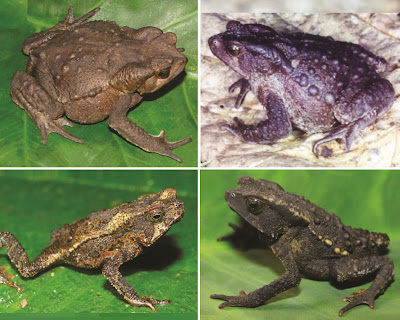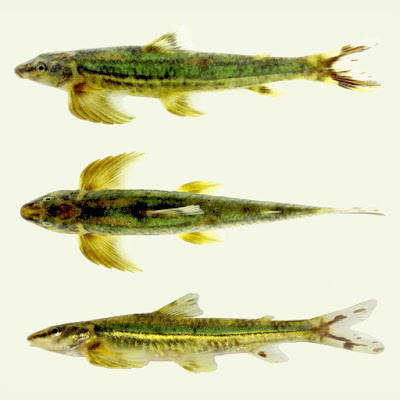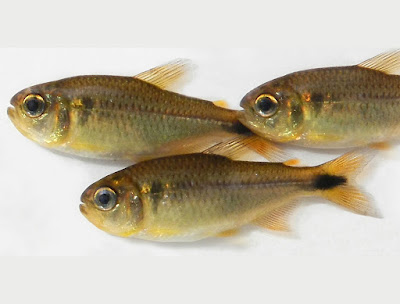[Most Recent Entries] [Calendar View]
Wednesday, August 4th, 2021
| Time | Event | ||||||
| 6:32a | [Herpetology • 2021] Rhinella moralesi • A New Species of Toad (Anura: Bufonidae: Rhinella) from Northern Peru Abstract We describe a new species of Rhinella from montane forests between 1788 and 2305 m a.s.l. in the Departamentos Amazonas and San Martín, Peru. We tentatively assign the new species to the Rhinella festae species Group based on morphological similarities with its other 19 members. It is characterised by large size (maximum SVL 91.6 mm in females), a pointed and protruding snout that is posteroventrally inclined, absence of a visible tympanic annulus and tympanic membrane, long parotoid glands in contact with upper eyelid, presence of a dorsolateral row of enlarged tubercles, outer dorsolateral tarsus surface with a subconical ridge of fused tubercles, and absence of subgular vocal sac and vocal slits in males. One specimen from Departamento Amazonas tested positive for Batrachochytrium dendrobatidis. Keywords: amphibia; Rhinella festae species Group; earless; cloud forest; Departamento Amazonas; Departamento San Martín; Río Abiseo National Park; chytrid fungus Systematics Family Bufonidae Gray, 1825 Genus Rhinella Fitzinger, 1826 Rhinella moralesi sp. nov. Lehr, Cusi, Rodrigues, Venegas, García-Ayachi and Catenazzi, 2021 Etymology: We dedicate the new species to our late colleague and friend Professor Victor Morales in recognition of his contributions to Neotropical herpetology. Edgar Lehr, Juan C. Cusi, Lily O. Rodriguez, Pablo J. Venegas, Luis A. García-Ayachi and Alessandro Catenazzi. 2021. A New Species of Toad (Anura: Bufonidae: Rhinella) from Northern Peru. Taxonomy. 1(3); 210-225. DOI: 10.3390/taxonomy1030015 | ||||||
| 10:41a | [Ichthyology • 2020] Characidium iaquira • A New Rheophilic South American Darter (Characiformes: Crenuchidae: Characidium) from the rio Juruena Basin, Brazil, with Comments on Morphological Adaptations to Life in Fast‐flowing Waters
Abstract Characidium iaquira, a new species from the upper rio Juruena, rio Tapajós basin, Brazil, is described. The new species can be promptly distinguished from all congeners by having a unique v‐shaped dark mark lying along the caudal‐fin extension, in medium‐ and large‐sized specimens, and a remarkable iridescent green colouration in life. Characidium iaquira is closely related to Characidium crandellii and Characidium declivirostre by sharing unambiguous synapomorphies such as branchiostegal membranes united to each other across the isthmus, a scaleless area extending from the isthmus to the pectoral girdle, and dermal flaps surrounding anterior and posterior naris independent, but touching each other distally. Morphological specializations of the paired fins in the three riffle‐dwellers species are discussed, including the wing‐like shape, robustness, and inclination of the pectoral fin. Keywords: Amazon, Characidium crandellii, Characidium declivirostre, Characiformes, pectoral fin
Characidium iaquira sp. n. Etymology: The specific name iaquira comes from the Tupi language, meaning green (Miranda, 1942), in allusion to the remarkable iridescent green colouration of body of the species in life. A noun in apposition. Angela M. Zanata, Willian M. Ohara, Osvaldo T. Oyakawa and Fernando C. P. Dagosta. 2020. A New Rheophilic South American Darter (Crenuchidae: Characidium) from the rio Juruena Basin, Brazil, with Comments on Morphological Adaptations to Life in Fast‐flowing Waters. Journal of Fish Biology. DOI: 10.1111/jfb.14485 | ||||||
| 7:12p | [Ichthyology • 2021] Moenkhausia cambacica • A New Species of Moenkhausia (Characiformes: Characidae) from the rio Madeira basin, Brazil, with Comments on the Evolution and Development of the Trunk Lateral Line System in Characids
Abstract A new species of Moenkhausia is described from the rio Machado drainage, Amazon basin, Brazil. It is diagnosed from congeners by its color pattern, consisting of the concentration of chromatophores on the anterior portion of body scales, the horizontally elongate blotch on caudal peduncle, a bright golden coloration of the dorsal portion of eye when alive, and a dark line crossing the eye horizontally. The new species has variable morphology regarding trunk lateral-line canals. Most fully grown individuals do not have enclosed bony tube in many lateral line scales, resembling early developmental stages of tube formation of other species. This paedomorphic condition is interpreted as a result of developmental truncation. Such evolutionary process may have been responsible for the presence of distinct levels of trunk lateral line reductions in small characids. Variation in this feature is common, even between the sides of the same individual. We reassert that the degree of trunk lateral-line tube development must be used with care in taxonomic and phylogenetic studies, because reductions in the laterosensory system may constitute parallel loss in the Characidae. We suggest the new species to be categorized Near Threatened due to the restricted geographical distribution and continuing decline in habitat quality. Keywords: Developmental Truncation; Evolution; Intraspecific Variation; Paedomorphy; Scale
Moenkhausia cambacica, new species Diagnose. Moenkhausia cambacica is distinguished from all congeners, except M. chlorophthalma Sousa, Netto-Ferreira & Birindelli, 2010, M. petymbuaba Lima & Birindelli, 2006, M. plumbea Sousa, Netto-Ferreira & Birindelli, 2010, and M. parecis Ohara & Marinho, 2016 by the presence of a large dark blotch on each scale of the second to seventh longitudinal series of body which are formed by a higher concentration of cromatophores on the anterior portion of scales (vs. pigmentation absent or, when present, concentrated at the middle or posterior margin of scales, forming stripes or a reticulate pattern). Moenkhausia cambacica can be readily distinguished from all the aforementioned species by having a conspicuous, well-defined, horizontally elongate blotch on the caudal peduncle, extending to middle caudal-fin rays, not reaching the upper and lower edges of the caudal peduncle (vs. caudal peduncle blotch absent or poorly defined, continuous with the longitudinal stripe of body in M. clorophthalma, M. petymbuaba, and M. plumbea; round blotch in M. parecis). Additionally, it can be distinguished from M. petymbuaba by the absence of a conspicuous longitudinal black stripe on body (vs. black stripe present), from M. plumbea and M. clorophthalma by the absence of a dark, diffuse, slightly concave midlateral stripe on body in live specimens (vs. dark stripe present), and from M. parecis by a shorter upper jaw length (41.5–48.8% HL vs. 50.6–55.0% HL), and, in life, by having a bright golden coloration of the dorsal portion of the eye and a dark shaded line crossing the eye horizontally (vs. eye entirely bright blue, with no horizontal dark line). Etymology. The specific name, cambacica, is after the one of the Brazilian popular name for Coereba flaveola (Linnaeus, 1758), a small neotropical bird whose coloration resembles that of the new species, which is bright yellow underparts, dark back coloration and a dark line crossing the region of the eye horizontally, contrasting with a light area above it. A noun in apposition.
Manoela Maria Ferreira Marinho, Willian Massaharu Ohara and Fernando Cesar Paiva Dagosta. 2021. A New Species of Moenkhausia (Characiformes: Characidae) from the rio Madeira basin, Brazil, with Comments on the Evolution and Development of the Trunk Lateral Line System in Characids. Neotropical Ichthyology. 19(2); DOI: 10.1590/1982-0224-2020-0118 Resumo: Uma espécie nova de Moenkhausia é descrita da drenagem do rio Machado, bacia Amazônica, Brasil. É diagnosticada das congêneres pelo padrão de coloração, que consiste na concentração de cromatóforos na porção anterior das escamas do corpo, em uma mancha horizontalmente alongada no pedúnculo caudal, na coloração dourada brilhante da porção dorsal do olho quando vivo e na faixa escura que atravessa o olho horizontalmente. A nova espécie apresenta variação na morfologia do canal da linha lateral do corpo. A maioria dos indivíduos totalmente desenvolvidos não possuem tubo ósseo fechado em muitas escamas da linha lateral, assemelhando-se aos estágios iniciais do desenvolvimento da formação do tubo de outras espécies. Essa condição pedomórfica é interpretada como resultado do truncamento do desenvolvimento. Tal processo evolutivo pode ter sido responsável pelos diferentes níveis de redução do canal sensorial de pequenos caracídeos. A variação neste caráter é comum, até entre os lados do mesmo indivíduo. Por isso, reafirmamos que o grau de desenvolvimento do canal sensorial do corpo deve ser usado com cuidado em estudos taxonômicos e filogenéticos, porque reduções no sistema látero-sensorial podem significar perdas paralelas em Characidae. Sugerimos que a espécie nova seja categorizada como Quase Ameaçada devido à distribuição geográfica restrita e ao declínio contínuo da qualidade do habitat. Palavras-chave: Desenvolvimento Truncado; Escama; Evolução; Pedomorfose; Variação Intraespecífica |
| << Previous Day |
2021/08/04 [Calendar] |
Next Day >> |
















